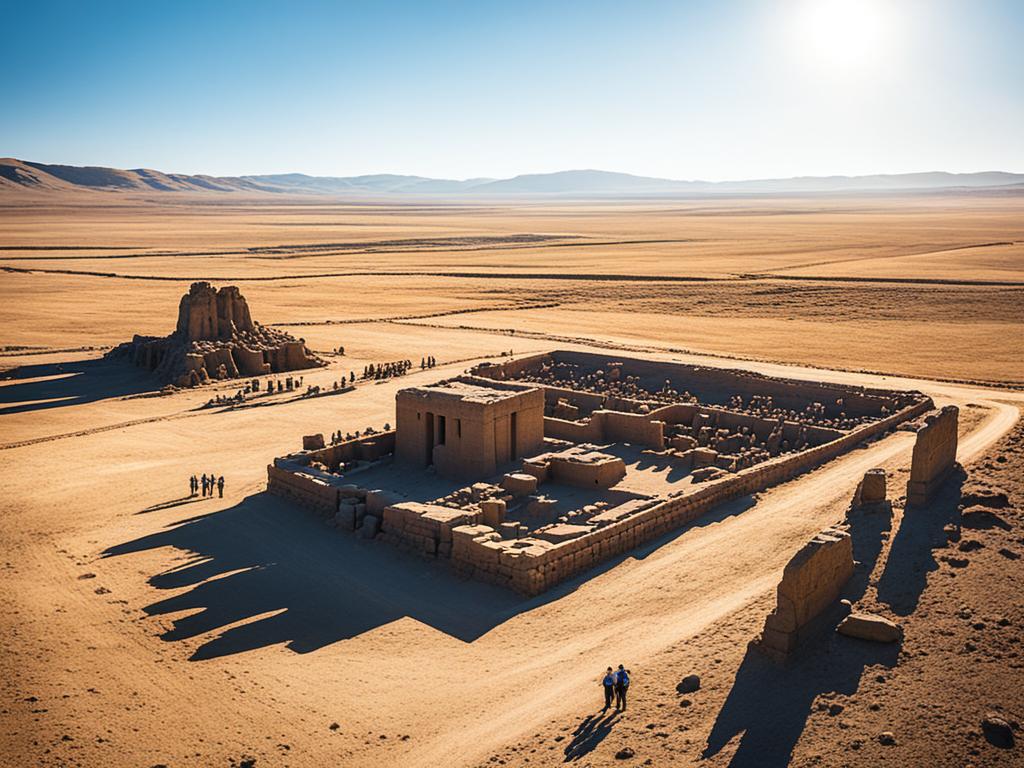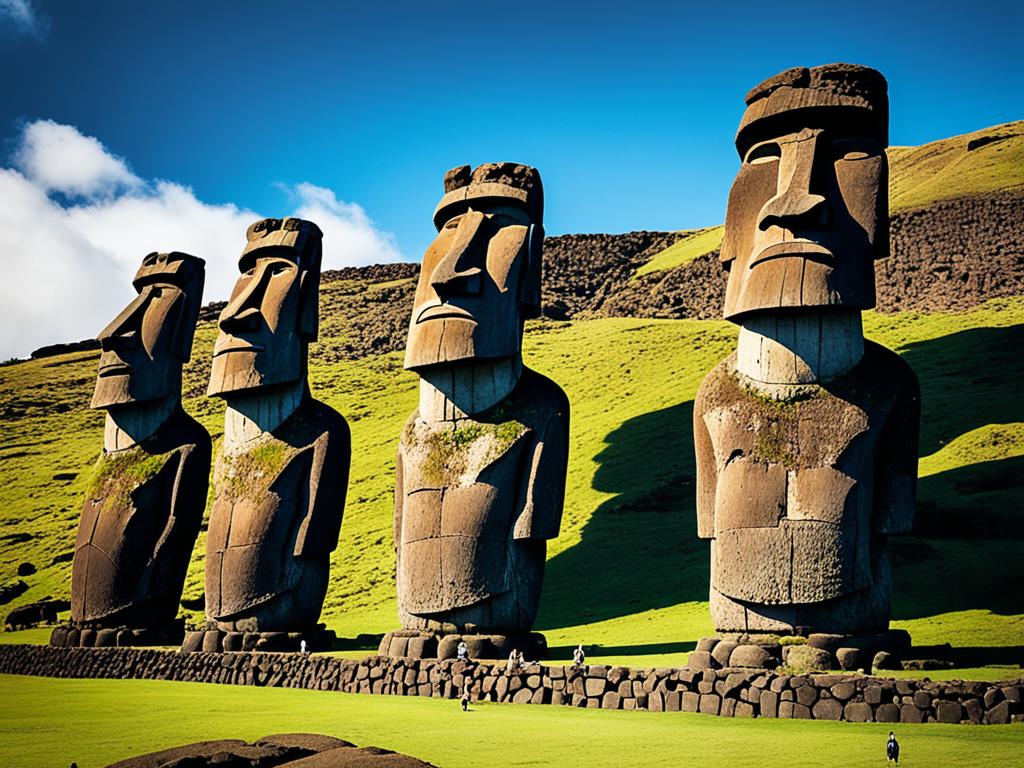Adverts
A Easter Island, also known as Rapa Nui, is a remote and mysterious destination in the Pacific Ocean. Located approximately 3,700 km off the coast of Chile, this island is famous for its gigantic and enigmatic stone statues calls Moais.
You Moais They are sculptural representations of the ancestors of local tribes and were carved from volcanic tufa in the quarries of the Rano Raraku volcano in the southeastern part of the island. The construction and transportation of these colossal statues is an intriguing mystery.
Adverts
A Rapa Nui culture, which inhabited the island, went into decline due to factors such as the depletion of natural resources and competition between tribes. Even today, the Moais from the Easter Island They represent an impressive testament to the ingenuity and creativity of the island's ancient inhabitants.
Main points of the article:
- Discover the secrets of the Moais and the history of Easter Island
- Discover the theories about the construction and transportation of statues
- Explore the archaeological discoveries that reveal the island's past
- Understand culture and the decline of Rapa Nui
- Preserve the legacy of Easter Island for future generations
Surprising Archaeological Discoveries: The Secrets Buried on Easter Island
Easter Island holds many secrets and mysteries that are being revealed through archaeological discoveries surprising. These excavations have revealed ancient artifacts, stone tools and decorated pottery, taking us to a lost world of an ancient civilization. The evidence found shows the existence of a unique and enigmatic culture that inhabited the island centuries ago. These traces of the past help to reconstruct the history of Easter Island and the people who lived there.
Adverts

To the archaeological discoveries on Easter Island have been of great importance in understanding the Rapa Nui culture and uncover the secrets that permeate the island. Between the ancient remains found, we highlight the stone statues known as Moais, which represent one of the greatest enigmas of Easter Island archeology.
- Excavations have revealed the techniques used in the construction and transportation of the Moai, shedding light on the skill and ingenuity of the island's ancient inhabitants.
- The artifacts found help to reconstruct the history of Easter Island and understand the rich culture of civilization Rapa Nui.
- The decoration on the ceramics found reveals the aesthetic patterns and symbolisms relevant to everyday life at the time.
- These discoveries have helped to dispel the mysteries that permeate the island and provide a more complete understanding of the Rapa Nui culture.
Archaeological remains provide valuable insights into the practices, rituals and beliefs of Rapa Nui culture over the centuries. They allow us to draw connections between past and present, understanding the complexity and richness of Easter Island's history.
The Construction and Meaning of the Moai: Riddles of Easter Island
A construction of the Moais is one of the biggest Easter Island riddles. These gigantic stone statues they were carved by skilled artisans using stone tools such as chisels and hammers made from basalt or obsidian. Each Moai is believed to represent a revered ancestor and was built to protect and bring prosperity to the community.
The Moais were transported using rocking and sliding techniques, which involved the use of tree trunks and stone rollers. The exact purpose of Moai is not yet fully understood, but they are considered symbols of power and authority in Rapa Nui culture.

Conclusion
Easter Island is a fascinating place, full of mysteries and secrets waiting to be uncovered. Through archaeological discoveries, we are increasingly closer to understanding the history and culture of the island's ancient inhabitants. The Moai of Easter Island are stunning testaments to the skill and creativity of the Rapa Nui, and they continue to attract tourists from around the world.
It is important to preserve the Moai and the history of Easter Island for future generations, ensuring that this legacy of humanity be appreciated and studied. A visit to Easter Island is a unique opportunity to delve into an intriguing past and get to know the mysteries of this enchanting land up close. Through tourism on Easter Island, we can support the preservation and conservation of this historical and cultural heritage, contributing to the sustainability of this beautiful region.
Finally, the Easter Island mysteries continue to intrigue and fascinate people around the world. As new discoveries are made and more research is carried out, we hope to unlock more secrets and gain a deeper understanding of this ancient civilization. Easter Island and its Moai are a valuable treasure of humanity, and we must value and protect the history they represent.




